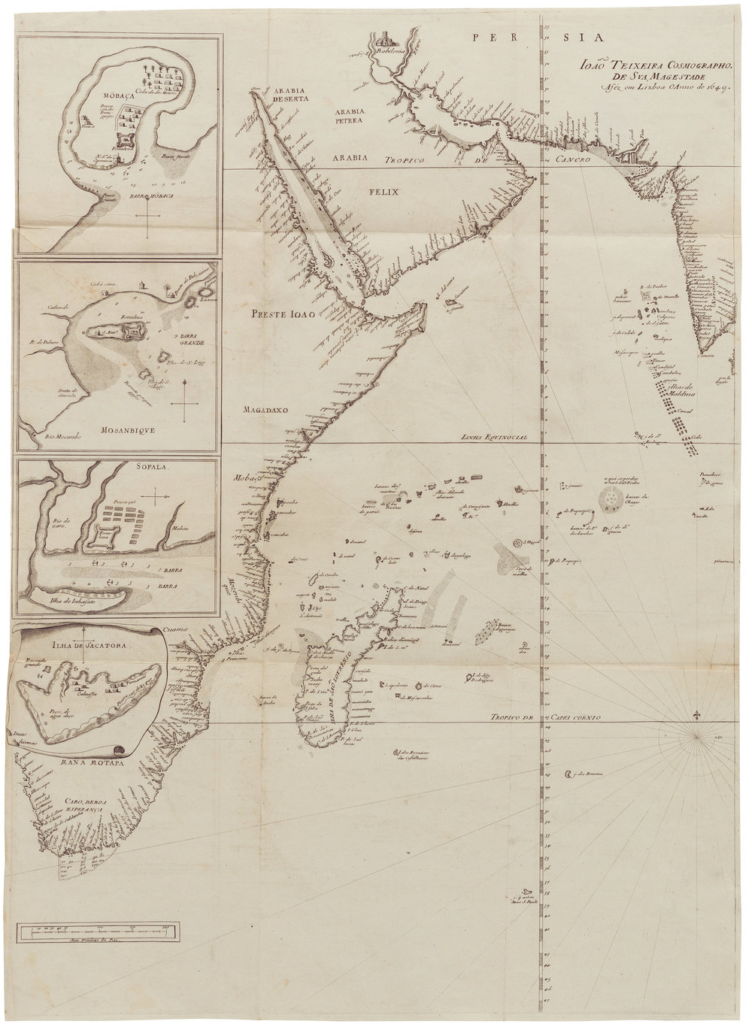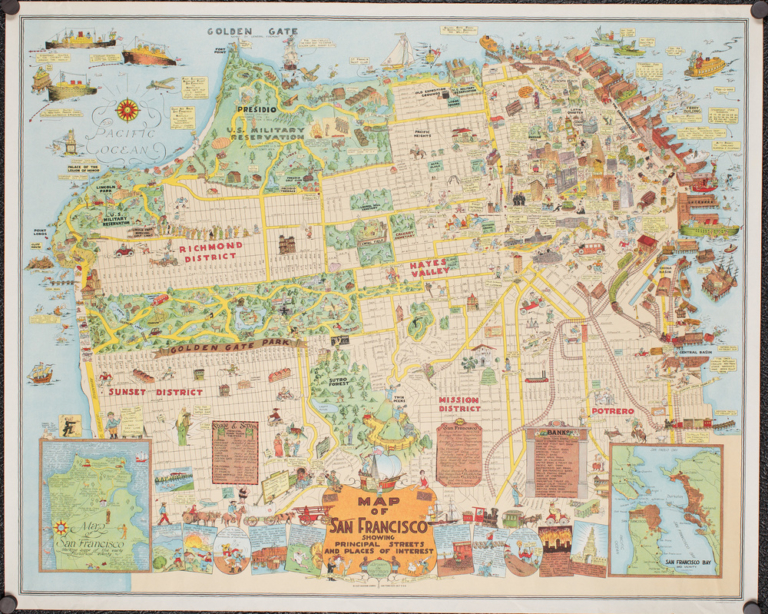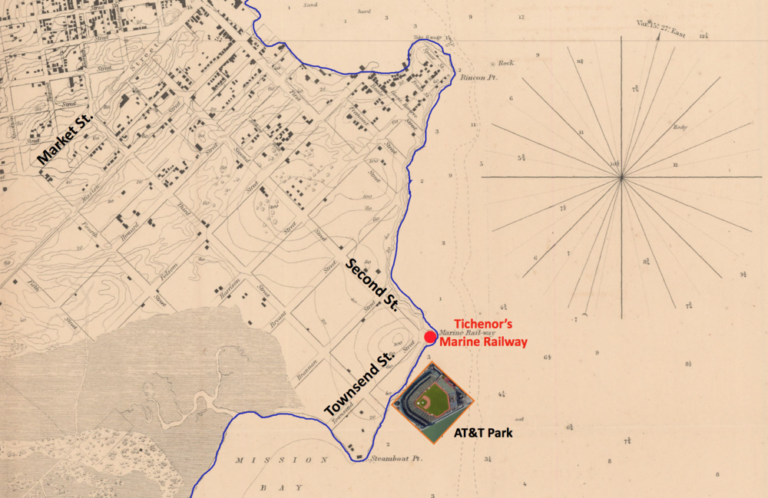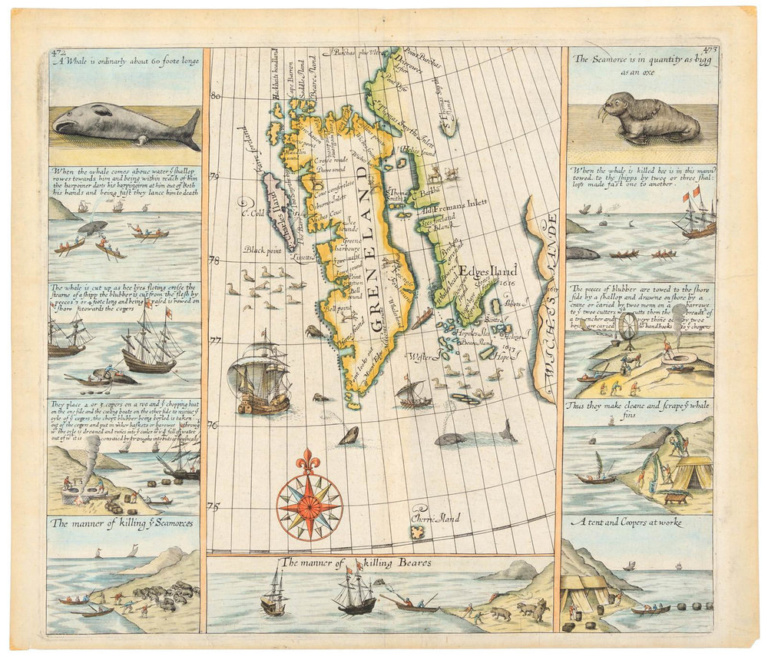Like Marco Polo, another long sojourner in the Mongolian Empire was Muhammad Ibn Battuta, who, in 1325 CE, set out from his home in Tangiers on the Hajj, and ended up spending about 25 years on the road traveling through Asia and Africa, mostly within the realms of Islam, which included much of the former Mongol empire.
From 1330-2 CE, Ibn Battuta sailed south from the Arabian peninsula past the Horn of Africa and visited the East African ports of Mogadishu, Mombasa, and Kilwa. In the following century, this area would be dominated by the Portuguese, who produced incredible sea charts like the one below. These charts reflect the knowledge the Portuguese had of the lucrative nautical routes between the Cape of Good Hope, Arabia, and Goa on the west coast of India, the contemporary key link to trading in the Spice Islands.

Ibn Battuta wrote of vast caravans, rich with gold accoutrements and gems, throwing golds coins before them as they made progress through cities, and these not of the great Kubilai Kahn, but of the rulers of the pieces of the formerly unified empire. Like Marco Polo, Ibn Battuta, too, might have exaggerated; his description of the opulence of the great rulers of Asia at least matches that of Polo. But then who in all of history would we expect to be richer than the rulers of one of the greatest empires the world has ever known?
Western views of “the East” are often accused of being tinged with fantasy, but what could be more fantastic than the creations of a vast empire? Is Imperial Rome any less fantastic in our imaginations than “The Orient”? Are the palaces and temples of Asia less fantastic than the palaces and temples of Europe or the Americas? Perhaps the only difference is that the familiar is less exciting than the new, and the imagination offers glories that reality can rarely match.
Ibn Battuta’s story—like most travelogues—brings us visions of a world we do not know, focusing on the most striking elements, sparking our imaginations of a fantastic world.



